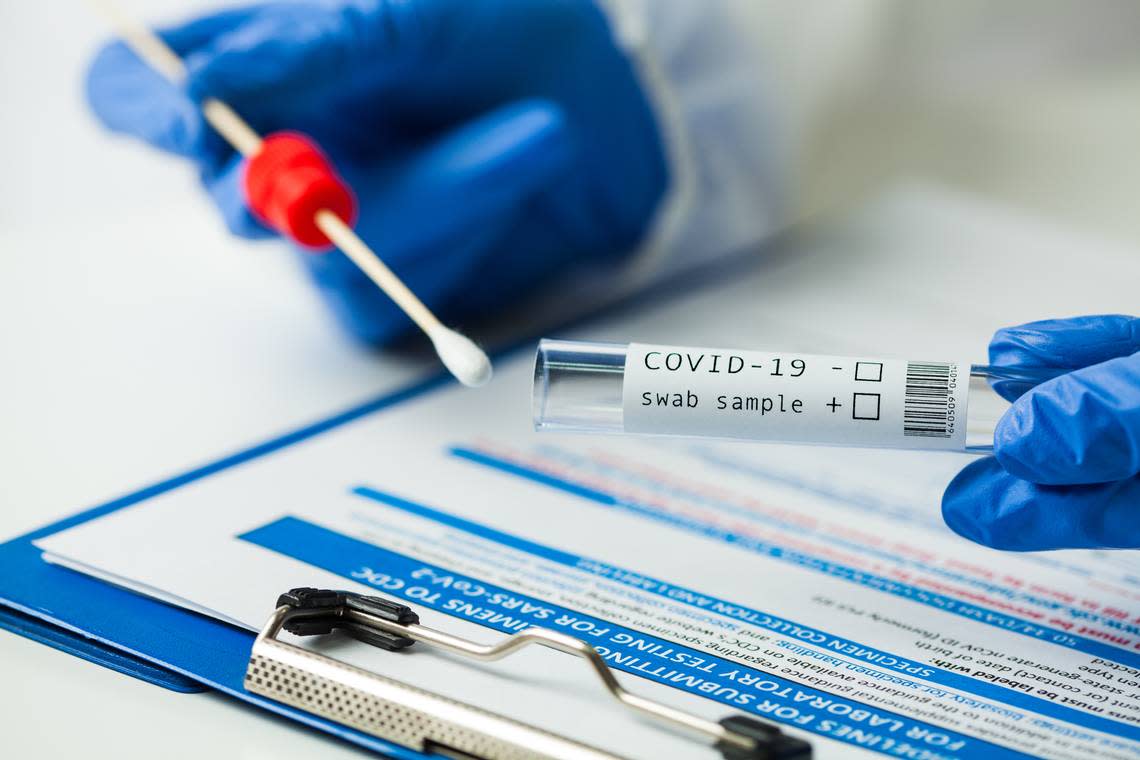‘We are very, very cautious’: What endemic COVID may look like for high-risk people

The persistence of COVID-19 has some medical experts suggesting the virus more likely will become endemic — a more predictable and potentially seasonal virus — rather than ever go away altogether. That would potentially mean fewer surges, hospitalizations and deaths.
But infection would still be possible and pose risks for Wendy McClamrock’s 16-year-old son Lukas, who was born with a rare genetic disorder known as severe combined immunodeficiency.
He has been living with a condition known colloquially as “bubble boy disease” that affects one’s ability to have produce an immune system.
The teen received a stem cell transplant at Duke University Hospital when he was a baby but still has to be vigilant about his health. His family is one of plenty across North Carolina who have had to be cautious throughout the pandemic because of preexisting conditions.
What would ‘endemic COVID’ look like for people at high risk?
When COVID-19 first hit North Carolina, the McClamrocks kept a close eye on the latest information and took as many precautions as they could, Wendy McClamrock said. That included not having guests in their home and restricting Lukas to only outdoor exercise.
“Initially, you know, if you’re a mother of a child or family of a child that has an immune deficiency, especially like SCID, you’re already prepared, because we’ve lived through this, as far as isolation and what to do,” she told the Observer. “We are very, very cautious.”
Lukas is now back in school and back on the basketball team, with the help of vaccination and other precautions. His school has mandatory masking, he sits by an open window and the school works with the family on contact tracing, Wendy McClamrock said.
Like with other viruses, such as the flu, those at high risk for a serious case will need to remain vigilant when and if COVID-19 becomes endemic, said Atrium infectious disease specialist Dr. Katie Passaretti.
“Certainly people that are at higher risk, as with any respiratory virus, may take more enhanced precautions to make sure that they’re staying safe at times when the virus seems to be picking up speed,” said Passaretti.
Those “precautions” would be particularly important when cases were spreading at higher rates — similar to what is commonly seen with the flu in the winter months.
The Centers for Disease Control and Prevention cautions that a number of factors can put you at higher risk for a serious case of COVID-19 such as kidney disease, diabetes, primary immune deficiency diseases and heart conditions.
Older adults, especially those 85 or older, are also at higher risk for serious coronavirus-related issues, according to the Mayo Clinic. Those with lung conditions such as cystic fibrosis, lung cancer, moderate to severe asthma and pulmonary hypertension are also “more likely to develop severe symptoms.”
A weakened immune system from an organ transplant, cancer treatment or HIV/AIDS can also make someone more vulnerable to COVID-19.
Atrium pulmonologist John Doty, who also works with the Charlotte branch of the American Lung Association, explained medical professionals should be able to give their patients more concrete advice once they have more information on how the virus is evolving.
“I think a lot may depend on how this virus behaves when it does become endemic,” he said.
Doty said he’s still advising his patients to mask up in public and wash their hands frequently and that those same precautions will likely be important, especially for those with preexisting conditions, when cases are spiking in an endemic world.
“If it would become endemic, and then also become seasonal, the most vulnerable could then take appropriate precautions,” he said.
Vaccination will also continue to be important for keeping COVID-19 at bay. The CDC has already approved a four-dose vaccine course for some immunocompromised people, including Lukas.
“It may be the COVID vaccine, like the flu vaccine, becomes something you get once a year, or maybe you might get one every six months,” Doty said.
For the McClamrocks, the plan moving forward includes taking precautions when necessary, contact tracing and keeping up with the latest information from experts through groups such as the Immune Deficiency Foundation.
“It was pretty scary and concerning initially,” Wendy McClamrock said. “Since then, things have evolved, and now we know more.”

 Yahoo Movies
Yahoo Movies 
